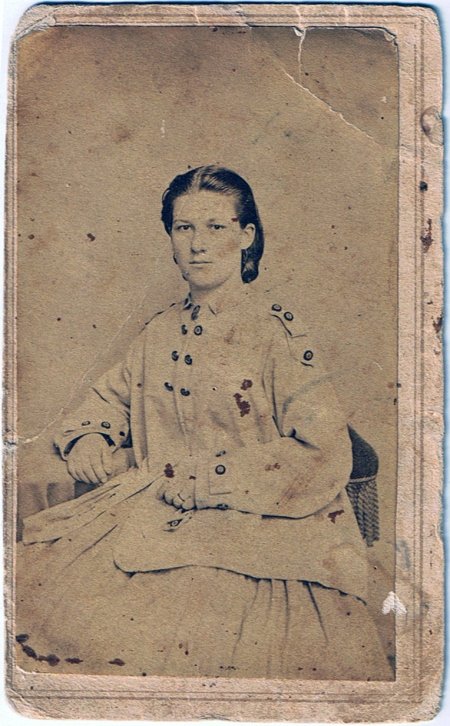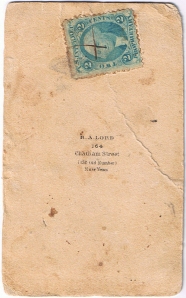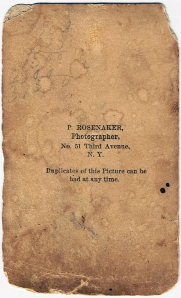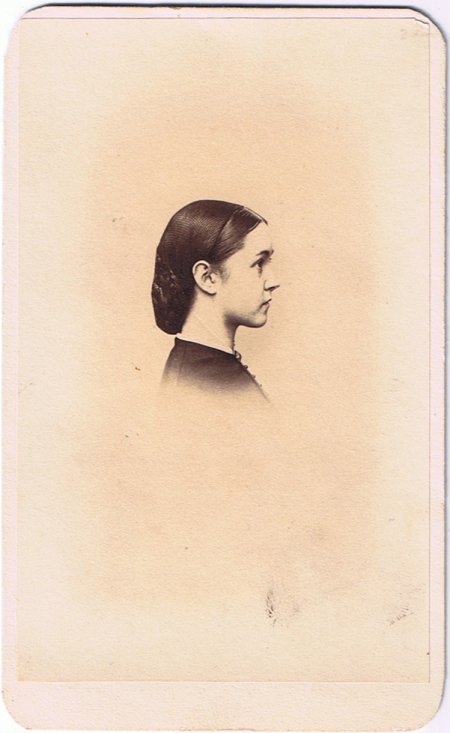
 Backmark: Houston 307 King Street S.C. [handwritten: “Amelia Vans——-“]
Backmark: Houston 307 King Street S.C. [handwritten: “Amelia Vans——-“]
Date: c. 1870s
Subject: Portrait of a woman
Location: Houston, S.C. [Note: There is a Houston in North Carolina, about 8 miles from the South Carolina border. I wonder if the boundary has changed since the 1870s?]
Dress: Silk, probably a solid-colored taffeta. There is a decorative square inset at the front neck of the bodice. I am not sure, but I think it is probably just piping basted onto the bodice to give the illusion of being a separate piece. The mid-height standing collar is a darker color from the bodice. Perhaps velvet?
She wears a heavily pleated white collar inside the dress collar, and a bow tacked or pinned at the neck. A black lace fichu or necktie is pinned over everything.
Jewelry: She wears hooked earrings, rather large and probably metal. There is a chain looped around her neck. I’m not sure if it is a necklace or a fob.
Hair: This style is really magnificent and undoubtedly required extra hair. The rolls on top are probably fake (real human hair, but purchased in the pre-rolled form), as is the mass of hair just visible in a coil behind the bow. I suspect that the long curls are real.
I don’t know much about this period, I’m afraid. If you can make any corrections, please do.















